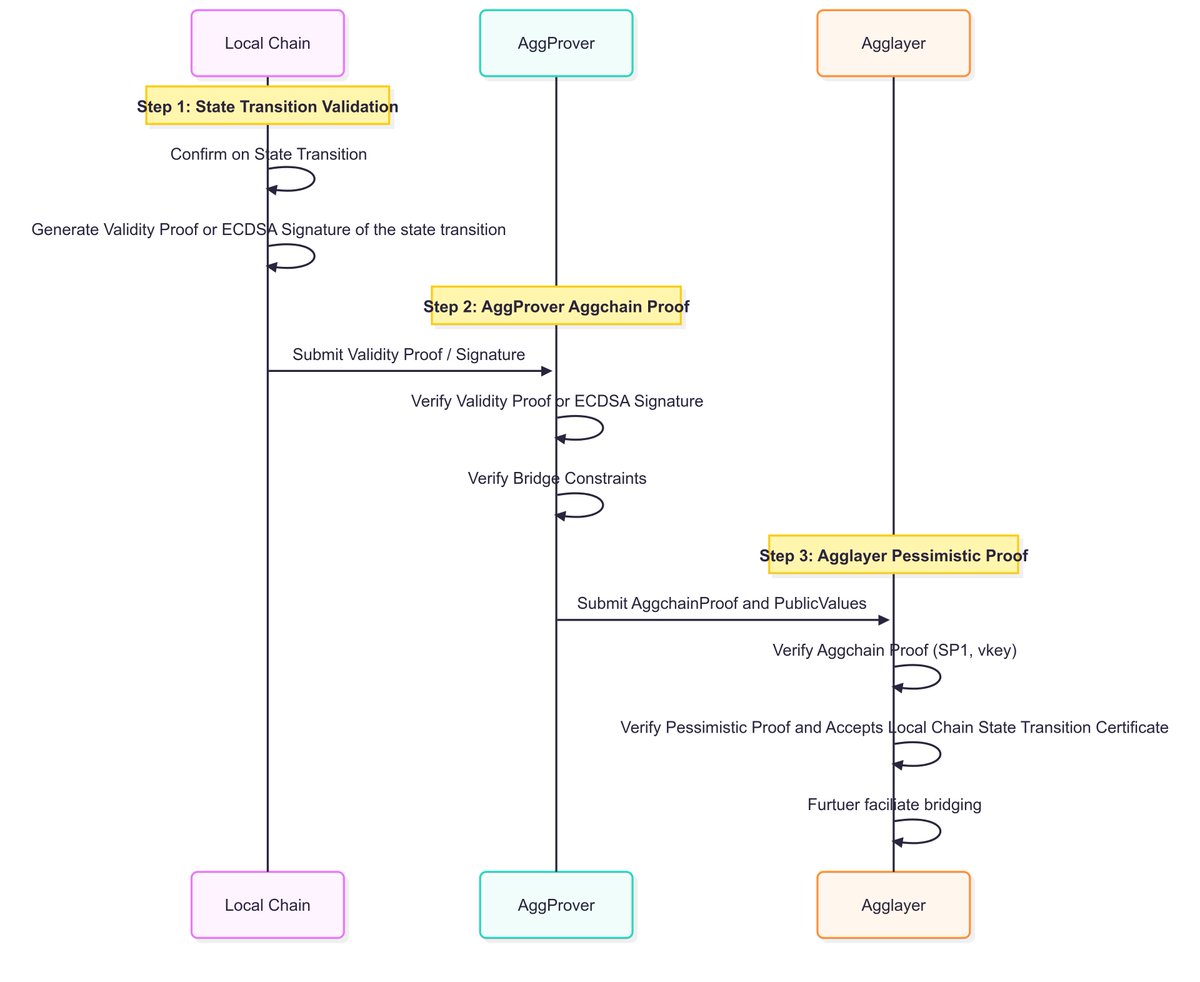🧵 @Agglayer v0.3 is out.
Most bridges still rely on “just trust us” vibes.
This release finally flips the model:
"don’t trust the bridge, verify the state."
Let me walk you through what changed and why it matters 👇
Before v0.3, Agglayer focused mostly on verifying cross-chain messages — not what happened within the chains.
Say Chain A sends 100 USDC to Chain B. The old model just verified that "a message to send 100 USDC" was passed. But it didn’t prove:
- whether Chain A actually deducted 100 USDC from your wallet
- or whether Chain B correctly minted the tokens
You were trusting the sequencers or bridge logic to “do the right thing.”
With v0.3, Agglayer adds full verification of those internal steps. It checks:
- That the state transition on Chain A was valid (e.g. balance was deducted)
- That the bridge behavior and claim on Chain B matches what actually happened
No more blind trust. Everything is provable now.

Agglayer v0.3 is a major upgrade to the pessimistic proof.
The core idea? Chains now attach a proof that shows they’ve properly finalized their own block — based on their own rules.
Think of it like #2FA for settlement: one factor is the state diff, the second is the proof that the block was honestly built.
Agglayer v0.3 security is strengthened via a three-step flow:
1️⃣ The state transition proof proves its own state transition (via zk proof or ECDSA)
2️⃣ The AggProver proof verifies state transition proof and bridge constraints (i.e., exits, root changes)
3️⃣ Finally, the entire thing is re-executed. This makes the whole system verifiable and tamper-resistant — no shortcuts, no trust assumptions.
Each step is executed in a zkVM, where we use @SuccinctLabs SP1! That's three SP1 Proofs per chain state commitment! Triple Trust!
It’s trustless, modular, and way more secure.
Let's explain each layer one by one:

Step 1 — State Transition Proof This is where each chain proves that its own internal state transition is valid.
If you're a zk rollup, you generate a full validity proof (e.g., Plonky2/3, STARK, etc).
If you're not, you can sign the new state root using ECDSA.
The goal here: prove "I processed these transactions and updated my state honestly."
The output is a proof of local state — it says nothing yet about bridges, just internal correctness.

5.3K
29
The content on this page is provided by third parties. Unless otherwise stated, OKX is not the author of the cited article(s) and does not claim any copyright in the materials. The content is provided for informational purposes only and does not represent the views of OKX. It is not intended to be an endorsement of any kind and should not be considered investment advice or a solicitation to buy or sell digital assets. To the extent generative AI is utilized to provide summaries or other information, such AI generated content may be inaccurate or inconsistent. Please read the linked article for more details and information. OKX is not responsible for content hosted on third party sites. Digital asset holdings, including stablecoins and NFTs, involve a high degree of risk and can fluctuate greatly. You should carefully consider whether trading or holding digital assets is suitable for you in light of your financial condition.


